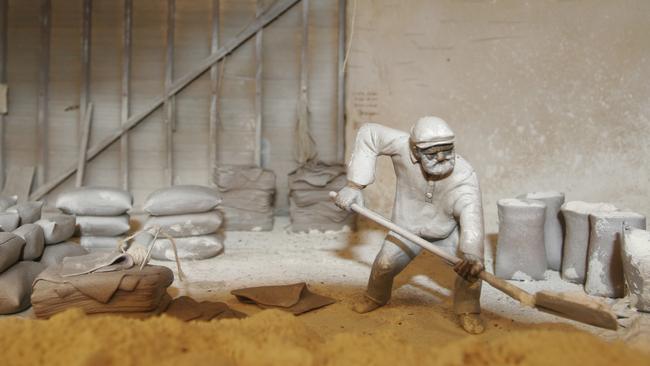Peter Mitchell writes about Mornington Peninsula’s early pioneers
THESE days it seems half of Melbourne invades the Peninsula over summer — but historically the show was on the other foot, Peter Mitchell writes

South East
Don't miss out on the headlines from South East . Followed categories will be added to My News.
It’s a well-known fact that a large portion of Melbourne often invades the Mornington Peninsula and not just during summer, long weekends or school holidays.
It’s only natural for this to happen, given our abundant attractions and reputation as ‘Melbourne’s playground’.
And yet the history books tell us that once upon a time, the boot was on the other foot.
It was a large portion of the Mornington Peninsula invading the fledgling settlement of Melbourne.
The early pioneers from the British Crown colony of Van Dieman’s Land, knew that there was one thing the township needed more than anything else — buildings.
Blocks of stone, quality bricks and lengths of timber were no problem — the essential ingredient was lime, needed to make the mortar that held everything together and the render that coated the finished product.
The canny ones knew from earlier records that plentiful limestone deposits could be found further south of Port Phillip around a place called Point Nepean.
For this scheme to work, and for pioneering Melburnians to have a roof over their head, and a pub, and a town hall and shops and stores, three things were needed.
Easily accessible lime deposits, plenty of fuel with which to burn the lime and then a way to efficiently transport all the bags to the rapidly expanding settlement.
As one might say in the modern vernacular, the Mornington Peninsula ticked all the boxes.
Among its ancient sand dunes limestone was found in huge quantities, just 30-45cms below the surface, particularly in the area which stretched from the geological Selwyn Fault, from Frankston down the coast to Rosebud, then across to Cape Schanck.
The quarried limestone was burned in kilns where it was stacked in alternate layers with wood. The residue was scraped out on a hearth and bagged.
In the bay there were loading points where bullock teams would drag wagons loaded with bagged lime into the shallow waters. The bags were transferred to barges, then to small sailing ships, to be dispatched to Melbourne.
The first recorded permit to burn lime at Point Nepean was granted to a Mr Berry by the NSW government in 1838.
Within a short time, commercial lime burning became the Mornington Peninsula’s first industry.
At one stage, there were 18 lime kilns operating between Point Nepean and Sorrento.
Some still exist today, and to the mark their significance, a replica lime kiln stands proudly at the Rye foreshore.
In a further nod to the past, there’s a street in Portsea that bears the name, Limeburners Way.
I have fond childhood memories of those lazy, hazy days of summer, frolicking on the beaches of the southern Peninsula.
For a boy from Frankston it was a treat indeed to leave Sorrento beach and head to the shops for an ice cream.
What is etched in my mind is walking barefoot on the hot bitumen before turning right onto a road made entirely of limestone.
The cool, refreshing white street was manna from heaven for the scorching soles of your feet.
During the Victorian gold rush of the 1850s, it’s well known that Melbourne became one of the largest and wealthiest cities in the world.
And it received the title of ‘Marvellous Melbourne’ with more than a little help from its southern neighbour.
Twitter: @Peter_Mitchell7
Instagram: peter_mitchell7
Facebook: Peter Mitchell
